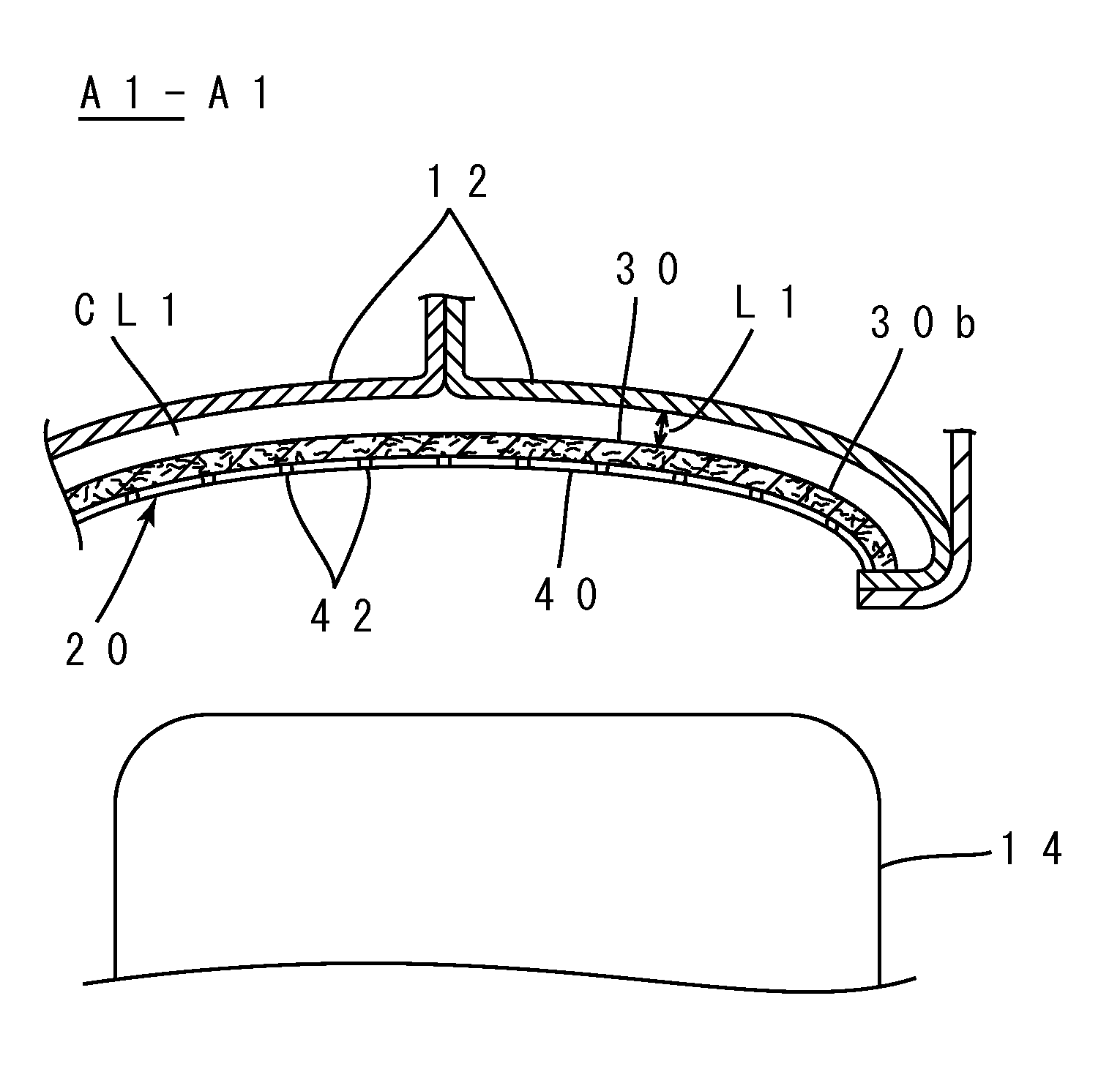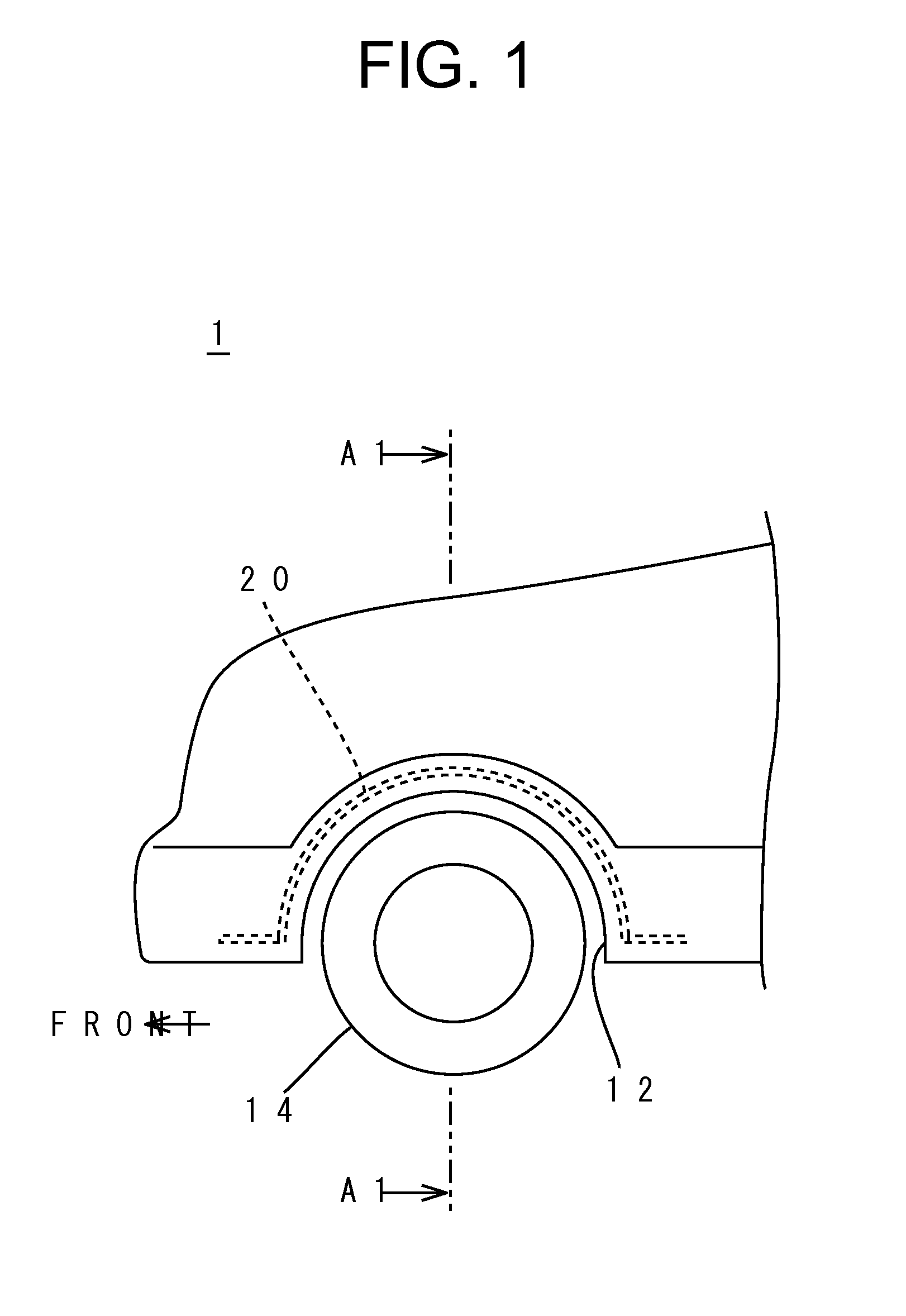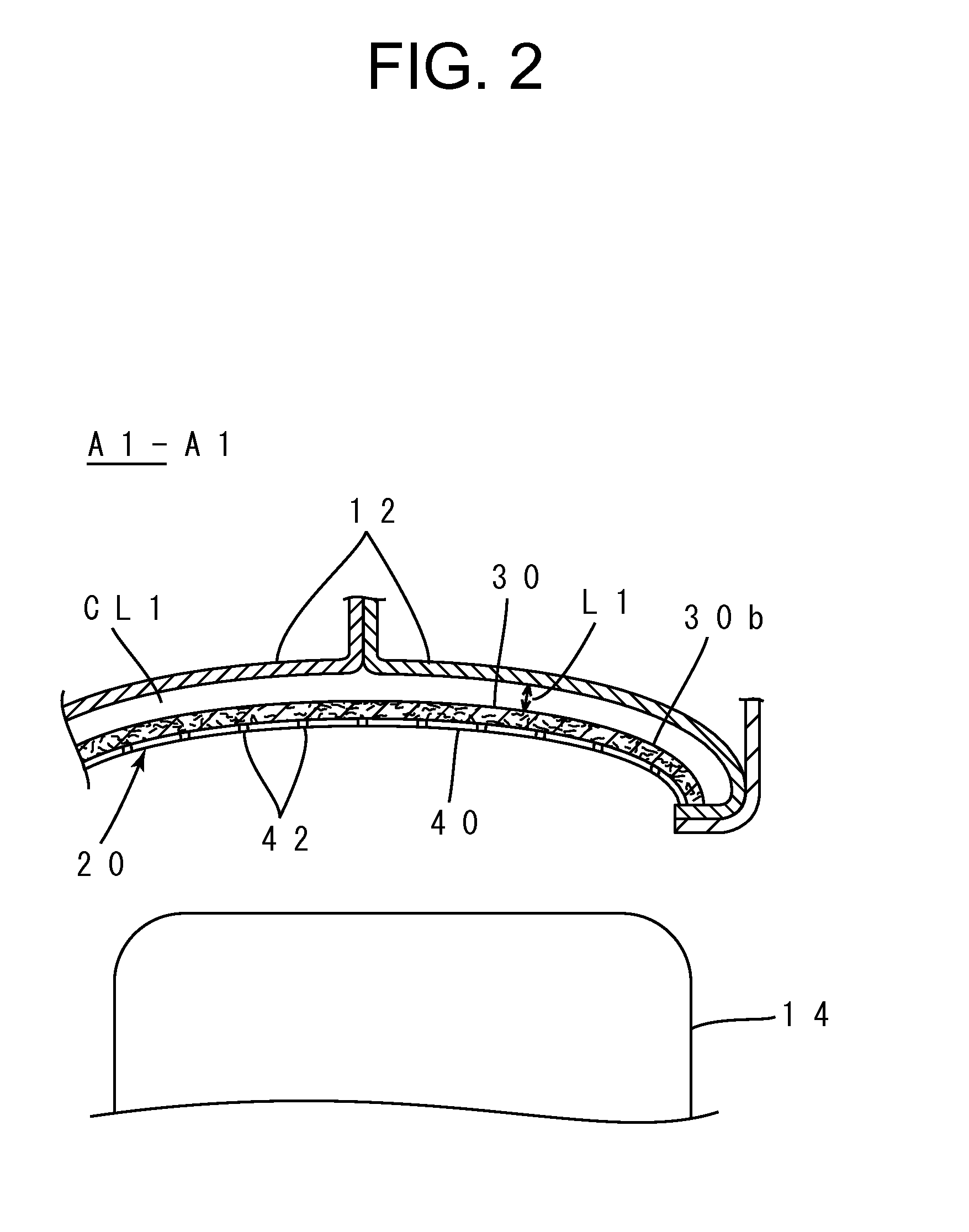Fender liner and process for producing the same
a technology of fender liner and fiber-based type, which is applied in the field of fender liner, can solve the problems of fiber-based type fender liner with problems in anti-fouling performance and anti-icing performance, and achieve favorable anti-icing performance, noise energy is hardly attenuated, and the effect of favorable anti-fouling performan
- Summary
- Abstract
- Description
- Claims
- Application Information
AI Technical Summary
Benefits of technology
Problems solved by technology
Method used
Image
Examples
example 1
[0107]For the matrix fibers, PET fibers with a fineness of 17 decitex, a fiber length of 76 mm, and a melting point of 260° C. were used. For the binder fibers, PET fibers with a fiber diameter of 4.4 μm, a fiber length of 51 mm, and a melting point of 160° C. were used. For the material for forming the protective layer, PE with a melting point of 130° C. was used.
[0108]The matrix fibers and the binder fibers were mixed so as to have weights per unit area of 375 g / m2 and 375 g / m2, respectively, and needled to intertwine with each other, thereby producing a sheet-like material with a thickness of 3.4 mm. On the other hand, the PE heated to 150° C. was extruded into a film shape so as to have a weight per unit area of 150 g / m2, and superimposed on the sheet-like material. Then, by using a large number of heated hot needles, a large number of through-holes with a diameter of 1.3 mm were formed in the protective layer so as to obtain an opening ratio of 10%. The overall thickness of the...
example 2
[0109]The same sheet-like material as that of example 1 was produced. On the other hand, PE heated to 150° C. was extruded into a film shape so as to have a weight per unit area of 250 g / m2, and superimposed on the sheet-like material. Then, by using a large number of heated hot needles, a large number of through-holes were provided in the protective layer so as to obtain the opening ratios and the diameters shown below, and so as to obtain a uniform number of the through-holes per unit area.
TestTestsection 1section 2Test section 3Test section 4Opening ratio15%10%7%4%Diameter of1.6 mm1.3 mm1.1 mm0.6 mmthrough-holes
[0110]The overall thickness of the fender liner sample thus produced was 3.5 mm, and the overall flow resistance values thereof were as follows: 600 Nsm−3 for test section 1, 730 Nsm−3 for test section 2, 830 Nsm−3 for test section 3, and 2000 Nsm−3 for test section 4.
PUM
| Property | Measurement | Unit |
|---|---|---|
| diameter | aaaaa | aaaaa |
| length | aaaaa | aaaaa |
| diameter | aaaaa | aaaaa |
Abstract
Description
Claims
Application Information
 Login to View More
Login to View More - R&D
- Intellectual Property
- Life Sciences
- Materials
- Tech Scout
- Unparalleled Data Quality
- Higher Quality Content
- 60% Fewer Hallucinations
Browse by: Latest US Patents, China's latest patents, Technical Efficacy Thesaurus, Application Domain, Technology Topic, Popular Technical Reports.
© 2025 PatSnap. All rights reserved.Legal|Privacy policy|Modern Slavery Act Transparency Statement|Sitemap|About US| Contact US: help@patsnap.com



